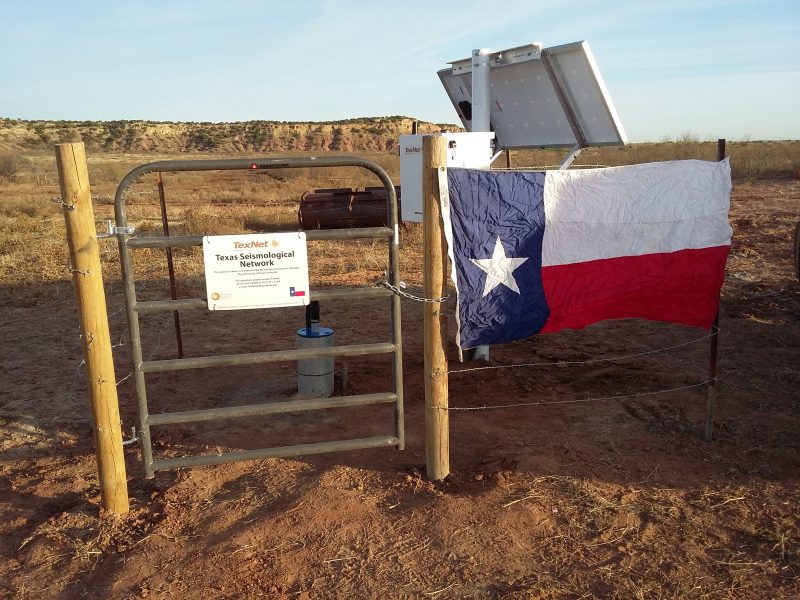Track Tremors Across Texas With New Website
October 17, 2017

The University of Texas at Austin Bureau of Economic Geology has finished installing the state’s earthquake monitoring network, TexNet, and thanks to a new interactive website, the public can follow and sort seismic activity in Texas in real time.
TexNet, the most advanced state-run seismic monitoring system in the country, was authorized by Texas Gov. Greg Abbott and the Legislature in June 2015 with $4.47 million in state funding. Like many areas in the south-central United States, Texas has experienced an increase in the number of earthquakes during the past decade, especially in the Dallas-Fort Worth area, the Permian Basin region and south-central Texas.
The seismic monitoring system is being operated in parallel with the Center for Integrated Seismicity Research (CISR), a multidisciplinary research team led by bureau research scientist Peter Hennings and Professor Ellen Rathje in the Cockrell School of Engineering’s Department of Civil, Environmental and Architectural Engineering. CISR is conducting fundamental research to better understand natural and induced earthquakes in Texas. TexNet and CISR include research partners from Southern Methodist University, Texas A&M University, the Southwest Research Institute and other institutions.
“Gov. Abbott and the Legislature have put Texas in the forefront of data collection and research into the causes of seismicity in the state,” said bureau director Scott W. Tinker, who led the formation of TexNet in 2015. “Small earthquake events have become more common in Texas recently, and we are now positioned to learn more about them and, hopefully, to understand how to mitigate their impacts in the future.”
TexNet includes 22 permanent monitoring stations, which brings the state’s total number of permanent seismic stations to 40. A team led by bureau research scientist Alexandros Savvaidis managed the design, installation and testing of the statewide network. The system also includes 40 portable seismic stations that are being used to increase the density of stations in areas with increased seismicity, such as in the Dallas-Fort Worth area, South Texas, and West Texas in the Delaware Basin and Snyder area. These portable stations allow for detailed examination of the location, depth, size and frequency of earthquakes, so scientists and engineers can better assess their cause.
“I am thankful for the governor and the 84th and 85th Legislatures’ investment in TexNet, for the counsel and support from the members of the governor’s TexNet Technical Advisory Committee, chaired by Robie Vaughn, and for the citizens in Texas who stepped up and allowed us to install seismometers on their land,” Tinker said. “I’m proud of the bureau’s TexNet team for this major accomplishment and for working so thoughtfully and objectively with all stakeholders on this prominent issue.”
For more information on TexNet and CISR and to view the interactive web page, go to www.beg.utexas.edu/texnet.
For more information, contact: Mark Blount, Bureau of Economic Geology, 512-471-1509.
